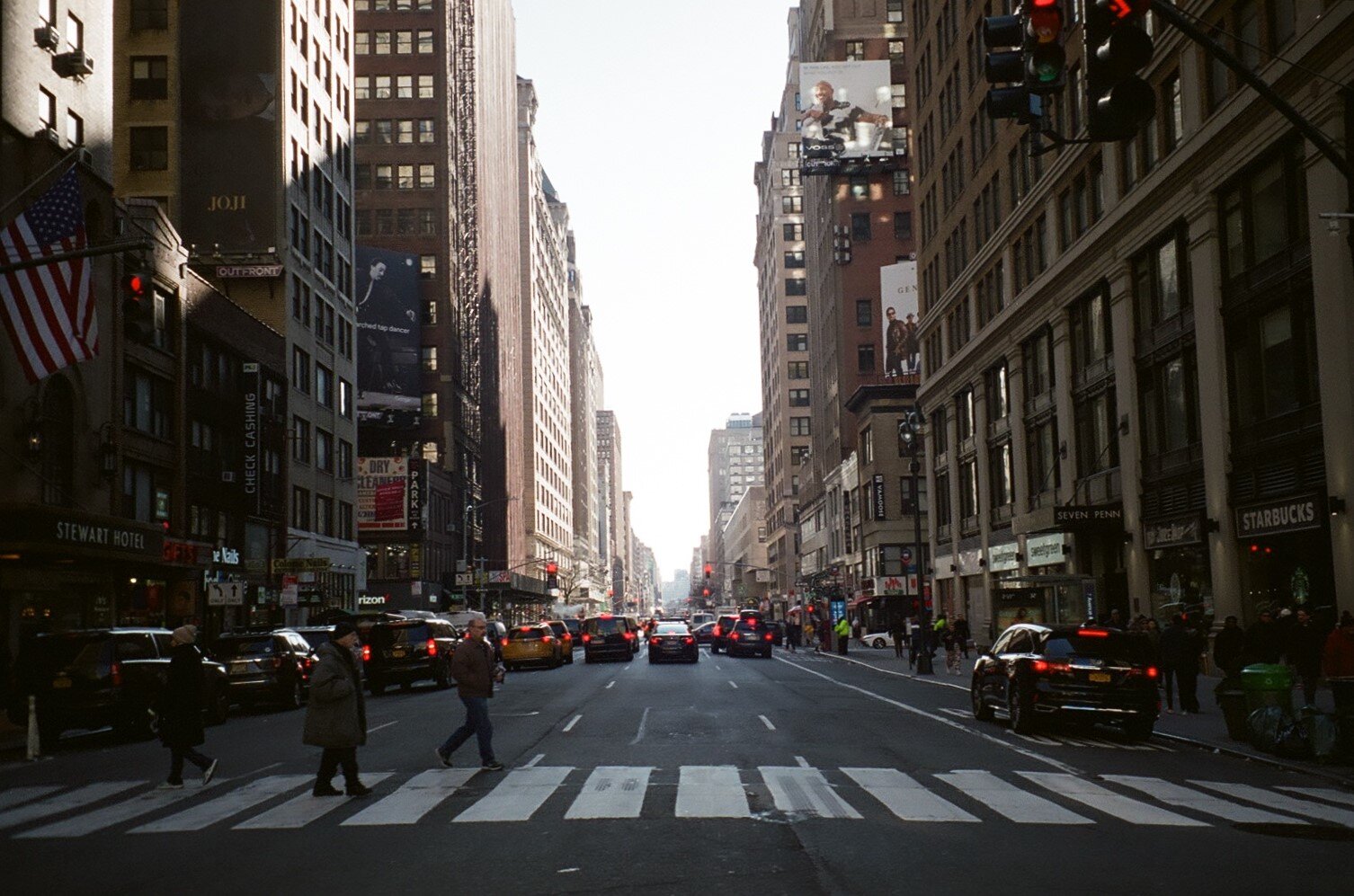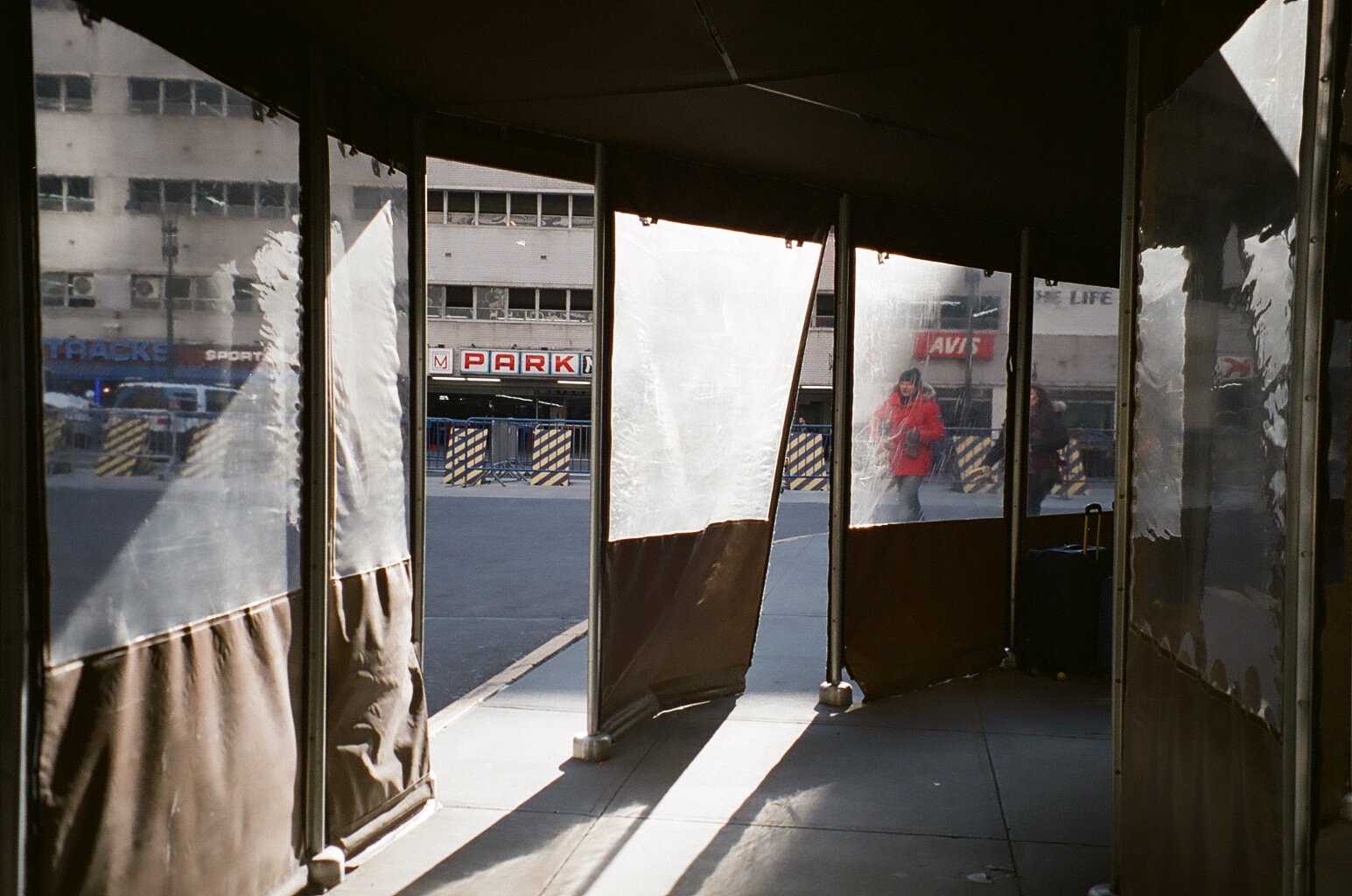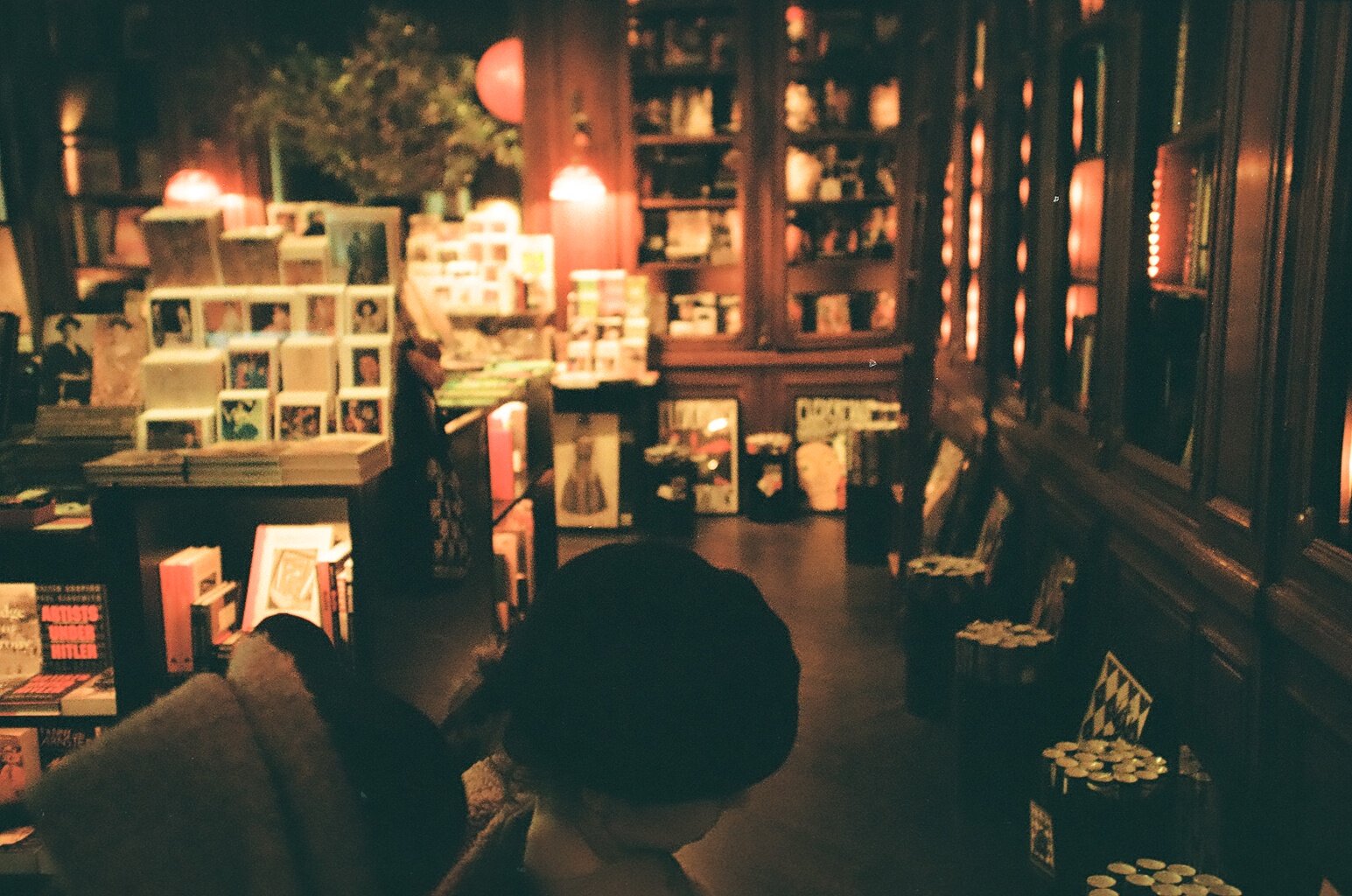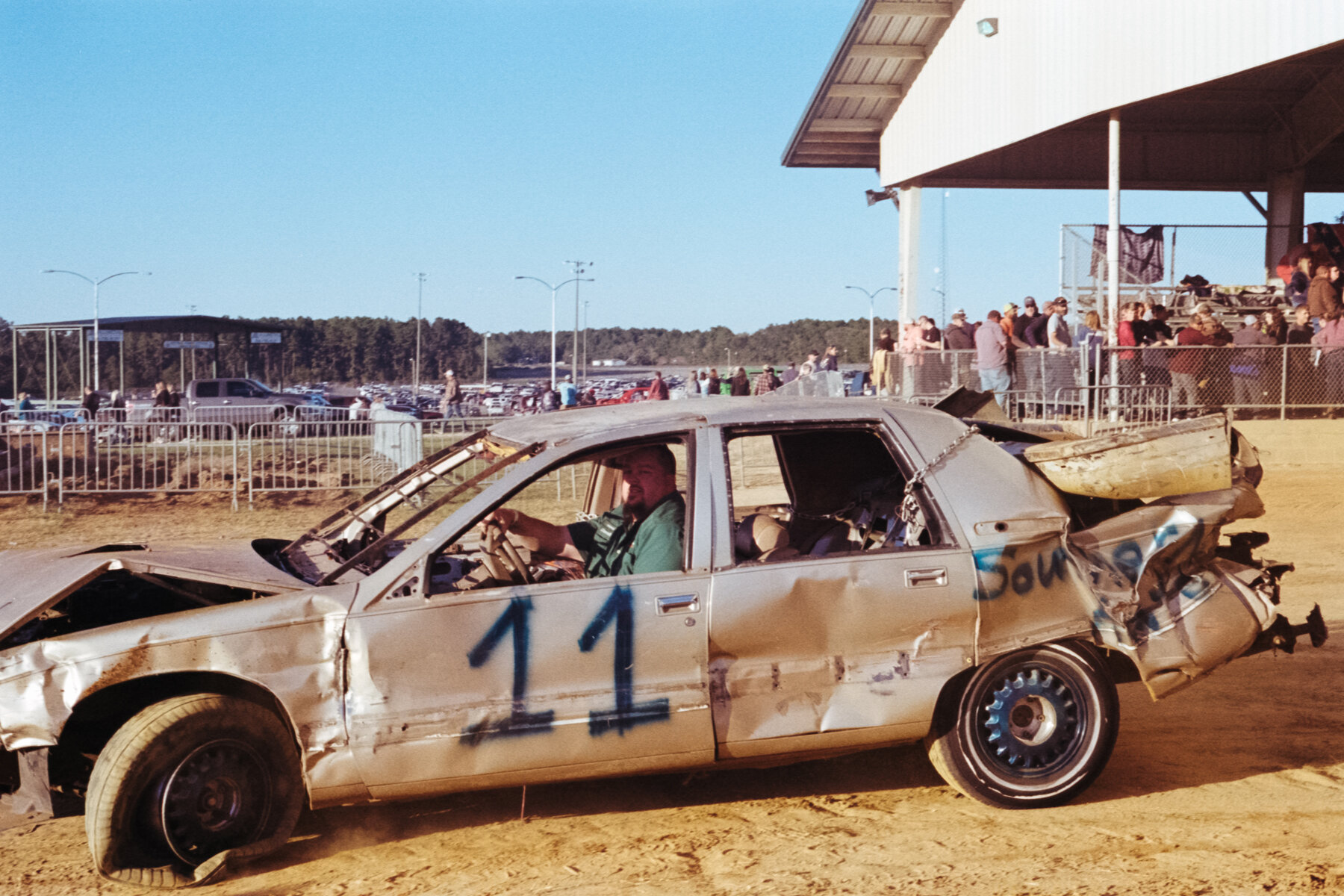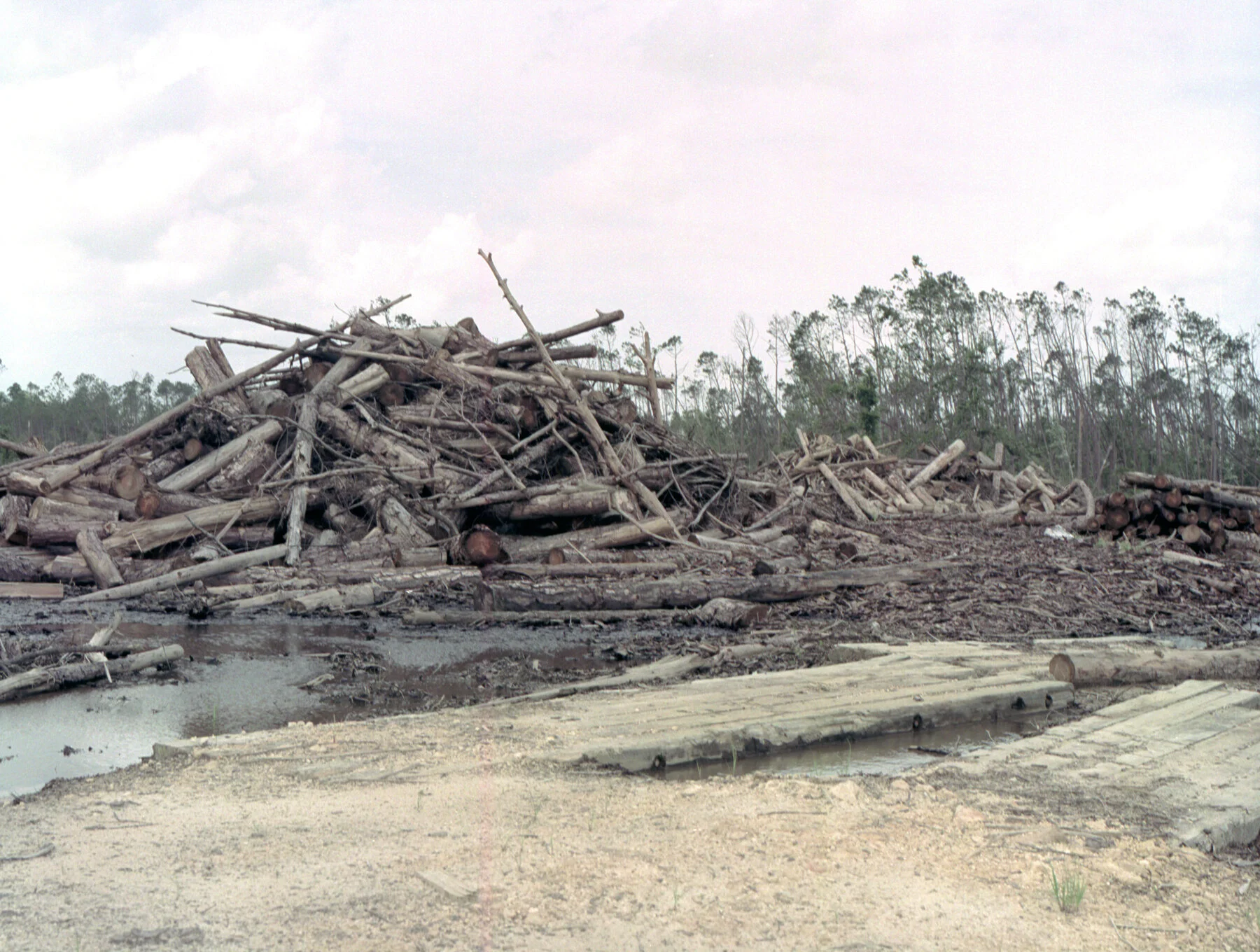SURE: Daniel Wang
PC: Daniel Wang
Andrew D. McClees (ADM): For those who aren't familiar, could you introduce yourself and your work, photographic or otherwise?
Daniel Wang (DW): Hi. My name is Daniel Wang and I am based out of Toronto, Ontario. I developed a fond interest in photography 3 years ago when I was introduced to skateboarding by the wonderful community I was surrounded by. How I thought about and viewed architecture and other physical aspects of a city were completely changed when I dove deeper into the the craft and mindset. My enthusiasm in street photography and photography as an art form was sparked through the exploration of my environments evoked by skateboarding and when my roommate introduced me to film photography and the history of art. Since then, I have worked professionally in event photography and started attending Ryerson University to further my understanding of the medium as a tool for creative expression. Currently available works include, my first photo zine "sure" and a selection of film photographs in my visual diary on instagram @danxuwang.
PC: Daniel Wang
ADM: "Sure" looks like it's a zine about a trip or travel - was there a specific trip it was from? - what's the story behind it, and where does the title come from?
DW: "sure" is a photo zine of a 40 hour trip I took to New York City on the last weekend of my reading week for school. I used a roll of Fuji Pro 400H and Kodak Portra 400, with my Canon Sureshot 70 zoom, developed and scanned at the local camera store. Many notable photographers of New York have inspired the run and gun and silent observer styles of photography present in the zine. On the creation of the title, who really knows. I could have been really stoned with my roommate and saw the "sure" in canon sureshot and called it a day, or it could mean something more. Something to do with the definition of "sure" as a definite affirmation and how the word is ironically perceived today as a "duh" or "whatever". Nevertheless, nothing is more ensuring then documenting a captured image and as a mantra, I can't help but say sure to an exhausting and mind stimulating 40 hour trip in New York.
PC: Daniel Wang
ADM: You use a lot of color blocking and color on your background (which I find really neat) - is there a significance to those color blocks, or is it an alternative to white to augment the images?
DW: I feel like there is a significance to the colour blocking. The editor and I really thought about the physicality and rhythm of the book and completed it overnight, we were very inspired. How the book felt to read through was most important. The tapered colour pages and coloured spreads provoke and primes the reader from every angle before even opening the book. The colours in the backgrounds are equally as important as the photos presented on the spread. We really tried colours until our intuition told us to stop. Inspiration came from colour palettes we'd see in the photos and our everyday life, from the t-shirts hanging in chinatown to our random assortments of gathered knickknacks. How did you find the coloured spreads and taper pages, Andrew? Do you have a favourite page and why?
PC: Daniel Wang
ADM: I quite liked them! I found that as a photograph Page 10 (or the 10th Spread — Pictured here directly above) is my favorite -- but that's very much a personal appeal - I really like centerfold images on a spread, especially used in a landscape/survey style -- as far as overall spreads 15 and 19 were my favorite layouts or sets of multiple images together, both for the image choice and the intersection of the images. Tying into the above - the zine seems to be chronologically ordered - what was the sequencing and selection process like for "sure?"
DW: I am glad the zine seems to be chronologically ordered, but it was definitely not! Again, we really just relied on intuition and instinct and wanted to experiment with something different then what we were accustomed too. Each spread was made with specific themes in mind, whether we wanted to completely highlight an image or add colour and shapes to the viewing space to augment the image. Putting it together was just seeing what felt right where. I would say these weren't my best photos of New York but they made the most sense for me to put together for this zine. The catalyst for the zine derives from thinking about how important the presentation or delivery of something can be, compared to the thing itself. Along with all the physical aspects of print and book making, creating this zine has opened a new channel for me to express my ideas.
PC: Daniel Wang
ADM: You mention working with an editor rather than strictly self-editing the zine - I think this is a great idea - who was the editor and what was the process like working with an editor outside yourself?
DW: As much as I love the idea of independently produced products I believe my collaboration with my editor, roommate and good friend Kolwyn McKinstry was an important element to developing and fine tuning my creative ideas. The hardest part is finding the right people you can confide in and share a creative vision with. Once I started talking more personally about expression, photography zines and colour, the discourse between Kolwyn and I became very valuable towards how our work process developed. Having another person to share my ideas with, helped me formulate and create this with much more confidence. He kept me stoked !!
ADM: I really like the thematic togetherness of the book - was there a specific moment or impetus where it clicked to step away from the confines of strictly ordering things chronologically as many zines are want to do?
PC: Daniel Wang
DW: Again, I appreciate that dearly. TBH, I had originally planned for the zine to be chronological but with our emphasis on how the book feels to read, we preferred the rhythm of the order we had chosen. It is hard to say if there was a specific moment or impetus, but it is a smoother read this way.
ADM: It's really cool to hear that this has opened up a new venue to express yourself - are you planning more zines?
DW: I am planning more zines! Going through this process has made me realize how much I love doing it, it is an interesting medium and I plan to experiment more with my editor and any willing collaborators for future zines.
ADM: Where can we pick up copies of Sure? and see more of your work?
DW: Sure can be picked up on my website www.danxuwang.com or by DMing me on instagram @danxuwang. I plan on releasing prints and more zines. It is currently a 1 man operation, but I will do my best to ship it in a timely manner !!
Hi thanks for giving this interview a read - to help support the hosting of the website please consider becoming a patron via the link below!
